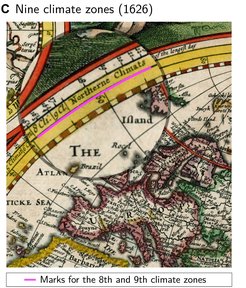Using AI to Trace the Evolution of Science
Researchers have developed an AI-powered method to analyze historical scientific texts, revealing how knowledge spread and evolved across early modern Europe. By examining centuriues of astronomical textbooks, the AI shows how scientific frameworks both expanded and adapted over time. This approach offers a promising tool for historical research, providing new insights into the evolution of scientific thought and potentially aiding future studies in diverse knowledge areas.

As society confronts the challenges of the Anthropocene, understanding the scientific and social developments that enabled human activity to influence the Earth system is of increasing importance. However, due to an abundance of available documents and a shortage of specialist researchers, the historical analysis needed to understand the evolution of scientific knowledge is difficult to complete at large scales.
In a recent study, a team of researchers test a new AI-powered method for analyzing historical texts and uncovering temporal and geographic changes in knowledge transformation. Using the Sacrobosco Collection, a large collection of historical astronomical textbooks, they show that AI methods can be used to study how mathematical and scientific knowledge evolved and spread across European universities from 1470 to 1650.
The new method was designed to enable machine learning in low-resource settings via an atomization-recomposition approach that leverages the documents’ compositional structure. Essentially, the team identified pages of text within the corpus that contained numerical tables. The tables were broken down into the individual digits (atomization) and then recombined by the AI into meaningful patterns (recomposition). The tables were then compared across books within the collection from different times and regions, enabling researchers to track how astronomical and mathematical knowledge spread geographically and temporally.

To test their method, the team conducted two case studies. The first examined the concept of climate zones, present since antiquity, and shows that, over time, the number of climate zones was extended from the original 7 to 7+2, and eventually up to 24. They thus show that the 'Age of Exploration,' often considered a time of revolutionary change in scientific understanding of the planet, reinforced and expanded the ancient concept rather than abolishing it.
In the second case study, the AI revealed the introduction of a table used to determine the position of the sun within the zodiac at various times in antiquity. This could have been used to infer the dates of events in classical texts, which often included astronomical observations.
“This reflects an early modern European effort to reconstruct ancient chronicles using astronomical methods, highlighting a preference for mathematical precision that reduces subjective interpretation and encourages consensus,” says Jochen Büttner, coauthor of the study and researcher at the Max Planck Institute of Geoanthropology.
Together, these findings demonstrate how machine learning methods can be used to analyze historical documents with limited training data. But more than that, the authors argue, they provide quantitative evidence of the change and spread of scientific knowledge in early modern Europe, showing how modern science evolved from a combination of tradition and innovation.
As AI becomes more common in research, this article proposes one way of using both human and machine learning to approach complex questions. The authors hope to apply their method to other forms of historical documents and knowledge areas, ultimately leading to an AI-based assistant that can help to identify patterns and connections in historical research.













